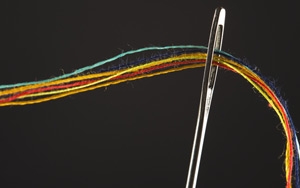
In a sign of how brands and their media agencies need to start thinking about campaigns, a series of patents granted to Google this week by the U.S. Patent and Trademark Office
show a thread weaving through search, email and social media.
Google inventors Timothy Jordan and Natalie Villalobos describe a method for sharing links to social networks from email in a patent
awarded to the company earlier this week. The patent encourages conversations in a social network.
It outlines someone receiving an email from someone they know. In the body of the email
it contains a link to a page in a book. When the person clicks on the link, the technology can pop up a window suggesting how to share the link on social media.
Email has never been an optimal
method for sharing content or links without forwarding the entire message. There is no real way to do this other than copying the link and pasting it into another email or opening Facebook, Google+ or
other social platforms.
advertisement
advertisement
Similar to search engine rankings, the patent explains a system that ranks social activity partly based on one or more popularities associated with the social activity
data. The method requires "identifying a first user associated with the message; determining whether the group of one or more social users is associated with the first user; and ranking the social
activity data based at least in part on whether the group of one or more social users is associated with the first user."
The patent initially identified by Quartz is not the only one supporting social that the USPTO recently
granted. Another patent by the same inventors describes a system for suggesting topics in a social network.
This third patent describes a method for providing recommendations to a search query based
on a specific subset of contacts from someone's social graph.
"A search query is received from a user that includes an identifier identifying a subset of the user's social graph. The entities
responsive to the search query are identified, and those entities having evaluations by or other associations with contacts from the identified subset are also identified. In response to the search
query, those entities having associations with the contacts in the identified subset of the user's social graph are provided as recommended entities in the search results."